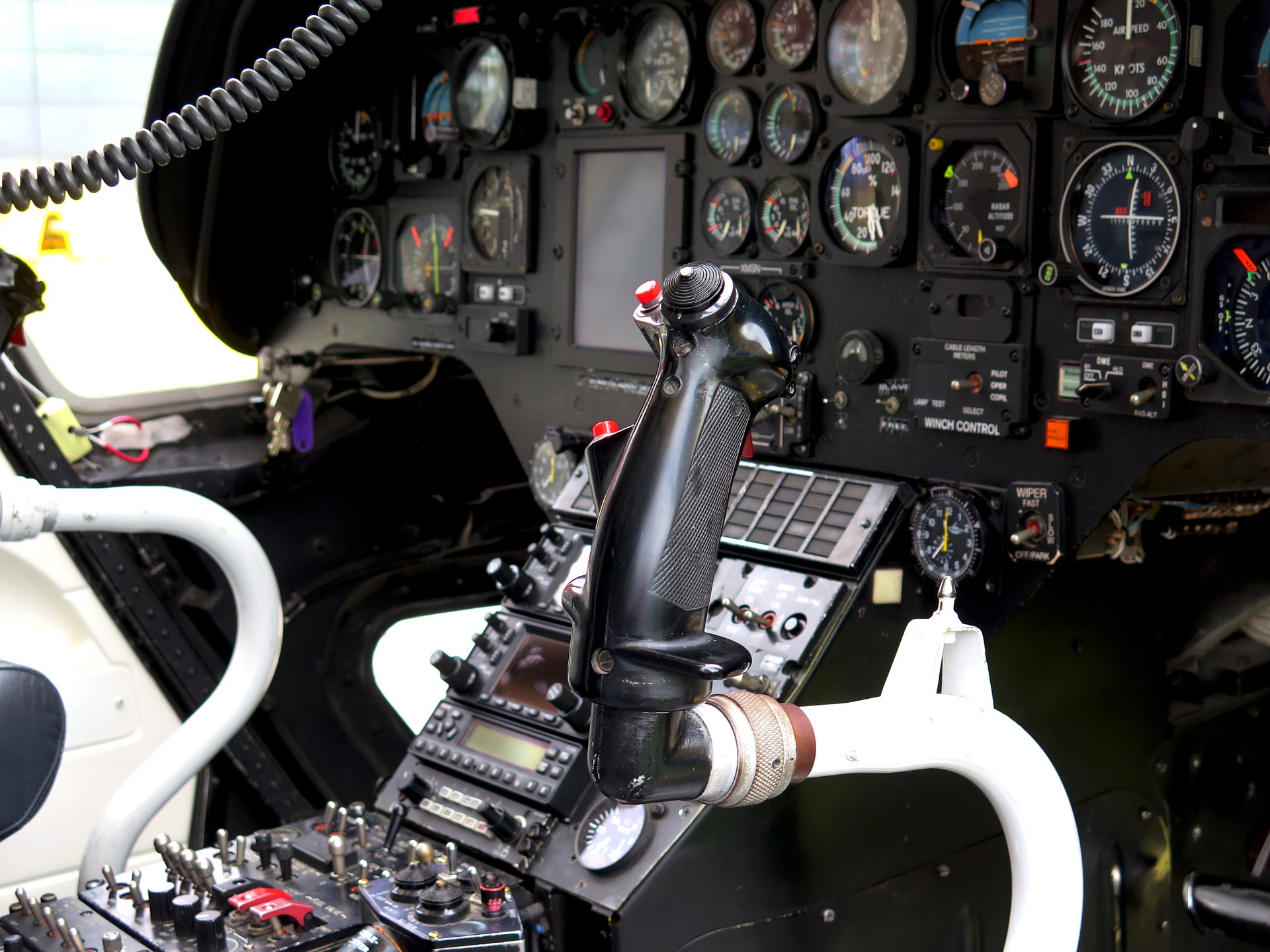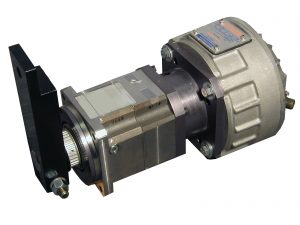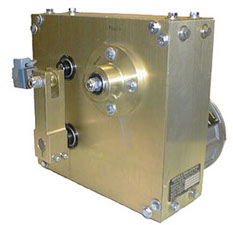
Air, Land, Sea, and Space...
We have you covered for all your training needs.
Translate This Page
Model 400-X Feedback Control Loader System
The Model 400-X Feedback Control Loader System is a versatile apparatus that can be adapted for a variety of training simulation equipment such as steering wheels, throttles, collectives, seat shakers, and tillers. It uses minimal to zero-backlash gearboxes in various configurations with DC brush-type motors, which eliminates friction and inertia in the flight controls.
The system meets FAA Level D of certification from the JAA, FAA, and military equivalents for rotary and fixed-wing aircraft. The unique coupled-mass servo force-loop technology provides the technical foundation for all their systems, combined with highly responsive electric actuators and sophisticated math software models that provide the highest fidelity control loading anywhere.
The aircraft control model is based on a real aircraft data model and can simulate any type of control system: fully boosted, partially boosted, or non-boosted. The system's spring rate and damping can be varied to simulate the change in the force gradient and damping present with the change in dynamic pressure.
Friction, stops, breakouts, boost actuators, non-linear gearing, non-linear hinge moments, and auto-pilots (simulated and real) are available with this system. The controls can be linked via software, and separate actuators can be utilized for aircraft that have separate left and right controls.
The 400-X Feedback Control Loader System can be used with their 300-X Feedback Control Loader System and full Motion Base Platform product line, creating a comprehensive and cohesive system for simulation training.
All systems come with a full one-year warranty and lifetime email/phone technical support. Extended warranties are also available.
For information on our software packages for this system, please click here.
For information on our integration and installation support, please click here.
Standard Specifications for 400-X Systems include:
Force at Pushrod is 1000 Lbs max, 500 Lbs continuous (other available)
Velocity at Pushrod is 25in/sec
Actuator Stroke is 5in max, 4in usable
Actuator Bandwidth is 100Hz or greater
Iteration Rate is 4000Hz or better
Latency (Ethernet) is less that 1ms
Analog to Digital Converter is 16-bit high speed
Digital to Analog Converter is 16-bit high speed
Reliability. Proven.
System Failure is not an option for us... with a MTBF of decades and virtual no maintenance. HFCL-X was made to last.
Customized Systems
With several models and designs to choose from, we work with you to get the job done... from design, manufacture and installation.
Support
Always at your fingertips... Need your team trained... we do that too.
Flight Control Model:
Coupled mass system. Model includes cable spring, coupled mass, friction, damping, aero hinge moment, aero damping, boost actuators, non-linear gearing, breakout, centering spring, for and aft stops (fixed or movable), trim, autopilot engage, weight on nose wheel, nose wheel velocity and nose wheel velocity angle.
Control Parameters from Host:
Dynamic pressure, roll rate, pitch rate, yaw rate, dynamic pressure divided by velocity, boost oil pressure, autopilot command, autopilot engage, weight on nose wheel, nose wheel velocity and nose wheel angle.
Variables to Host:
Stick positions, Pedal position, Surface positions, control forces, nose wheel angle, nose wheel force, error code. Others available upon request.
Interfaces:
Several interfaces are available: Bit 3, Ethernet, DR-11W (Concurrent), HSD (Encore), and UBC (Universal Bus Controller, Harris). Bit 3 is the easiest to use, Ethernet is the lowest cost for hardware. RS-232 can be used but is usually too slow. DR-11W, HSD, and UBC are essentially obsolete and should only be used with older host computers.
Power Requirements:
115 (230) volts, 7 (3.5) amps peak per axis
115 (230) volts, 1 (0.5) amps quiescent per axis
115 (230) volts, 3 (1.5) amps for the processor
Fixed Wing Aircraft Experience
Embraer EMB-120
Beechcraft King Air
Boeing 737 Loft
Boeing 737 JTS
AT-3
Cessna T-37
Cessna T-38 Talon
Beechcraft King Air C-90
Beechcraft Baron
Northrop F-5 Tiger
Piper Cheyenne Pa-42
Boeing C-17 Globemaster
Lockheed C-141 Starlifter
Cessna 421
Beechcraft Super King Air B200
Douglas A-1 Skyraider
Boeing B-52 Stratofortress
ACT-02
Beechcraft T-34 Mentor
McDonnell Douglas AV-8B Harrier II
Bombardier CL-415 Water Bomber
McDonnell Douglas DC-9
JSTARS E-8C
Cessna Ironbird Jet
Bombardier CRJ (Canadian Regional Jet)
McDonnell Douglas F-15 Eagle
Dornier 328
Northrop Grumman EA-6B Prowler
Beechcraft C-12 Huron
Lockheed C-130 Hercules
Lockheed F117 Nighthawk
Boeing KC-135 Stratotanker
Rotary Wing - Helicopter Experience
Robinson R-44
Airbus HH-65 Dolphin
Sikorsky MH-60 / SH-60 Seahawk
Bell B212
Bell UH-1N Twin Huey
Boeing AH-64 Apache
Boeing AH-64 Apache Longbow
Sikorsky MH-53 Pave Low
Boeing CH-47 Chinook
Control System Modeling
Multi-Mass Modeling
Aircraft Measurement
Aircraft Dynamic Curves
Verification and Validation
Terrain and Nautical Applications
Steering Wheels
Joystick Controls
Rotary Wing System Applications
Collective Lever
Cyclic Stick
Directional Pedals
Fixed-Wing Systems Applications - FAA Level D
Flight Stick, Wheel & Column
Rudder Pedals
Throttle Controls
Auto-Pilots
Trim and Tillers



